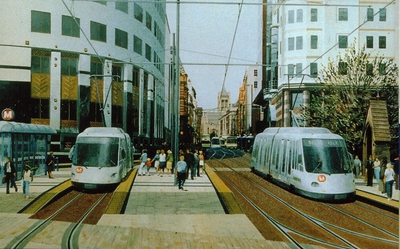Why are we adopting a similar position to those in the US where "if a new metro is needed, we use a tram, but disguise it by calling it light rail"? IMO, trams are only really viable if there is a small, high density, urban area that can be connected by plenty of re-used, formerly disused/under utilized national rail alignments (see Croydon for a good example). For the vast majority of situations where trams are built, the disruption that construction causes is immensely far too high, with trams still being impacted by road traffic, in the same way as a bus.
Instead of this, why don't we look at ACTUAL light rail, such as the DLR, which I personally see as one of - if not - the best metro systems in the world. A DLR style network (automated, medium frequency services with 200-500m stopping distances) with a slightly smaller, deep level tube style profile would work excellently in smaller, mid-to-high density cities, such as Cambridge and Canterbury, and could easily be adapted for larger, higher density cities, like Leeds and Portsmouth. It could also be done much more cheaply than most people would assume, if there was a national standard for the construction specifications, allowing for common parts to be made in larger quantities (which cuts manufacturing costs significantly), and for construction to be continuous (one of the largest costs in construction is mobilizing a workforce/production line).


